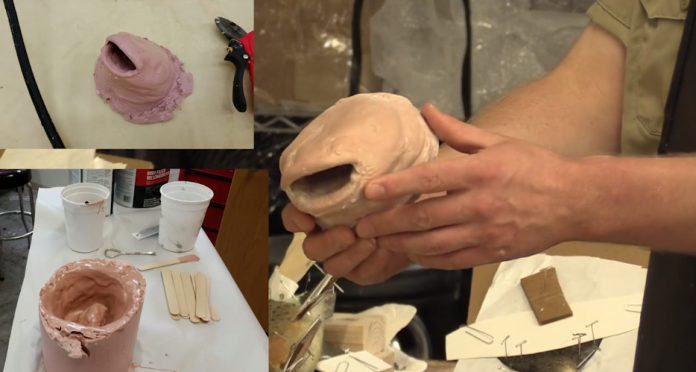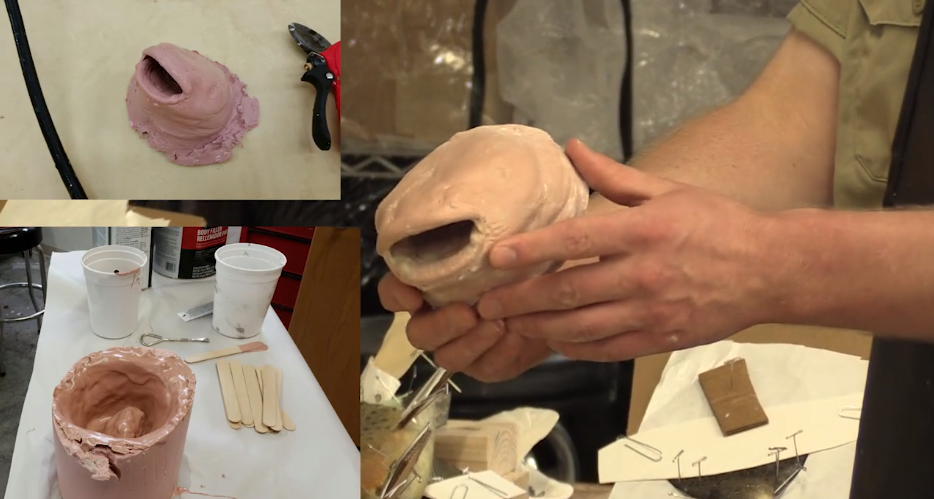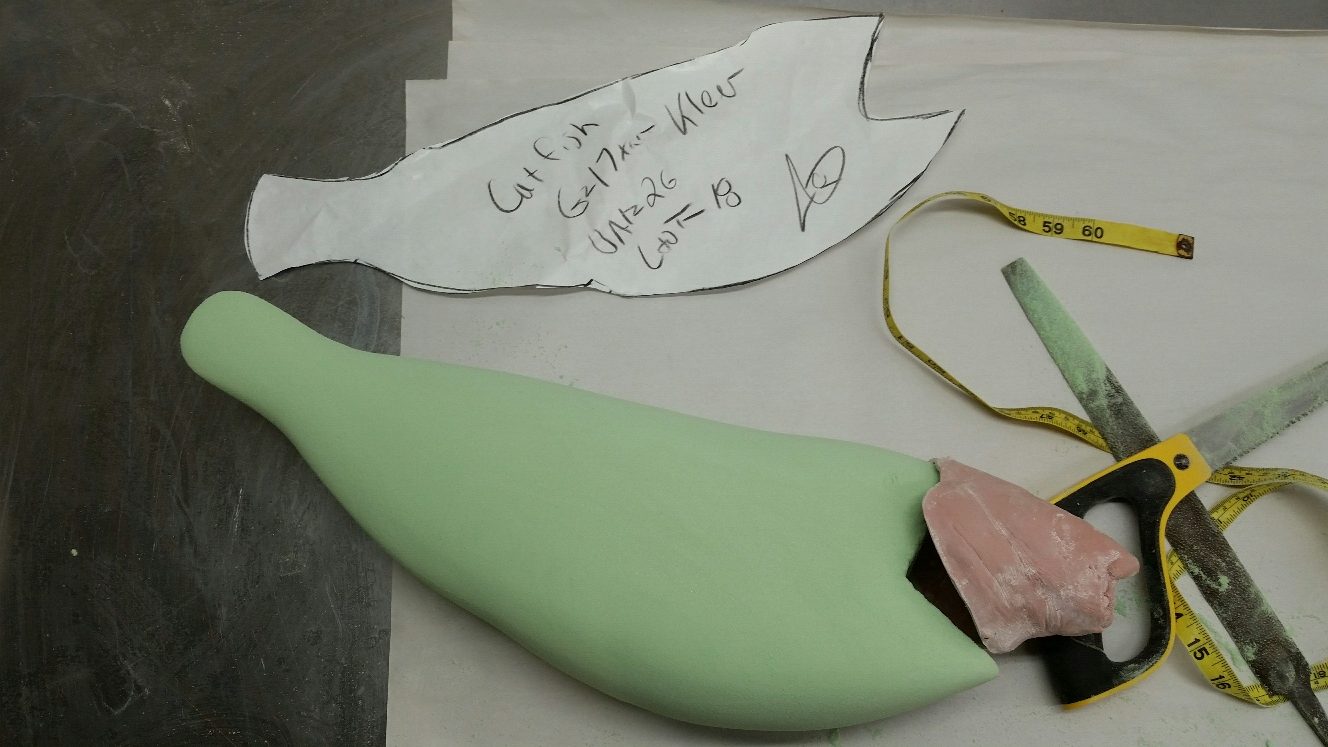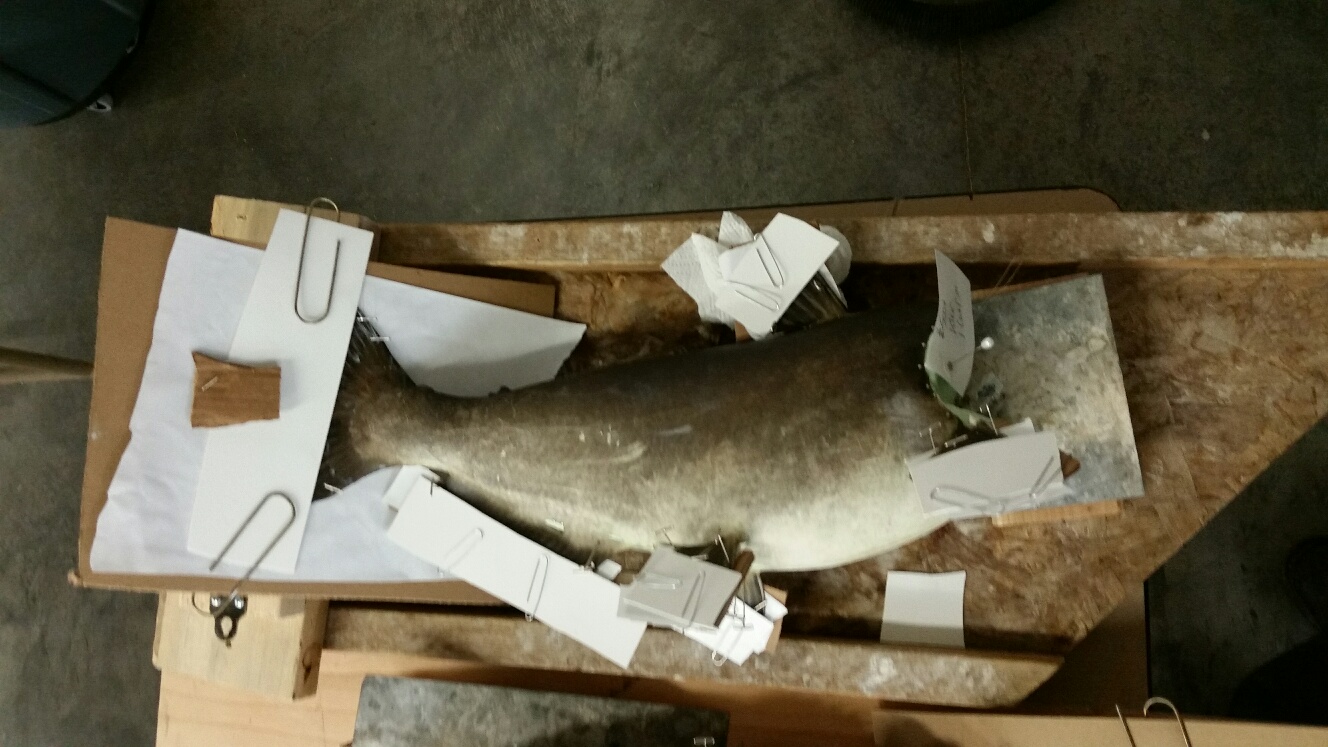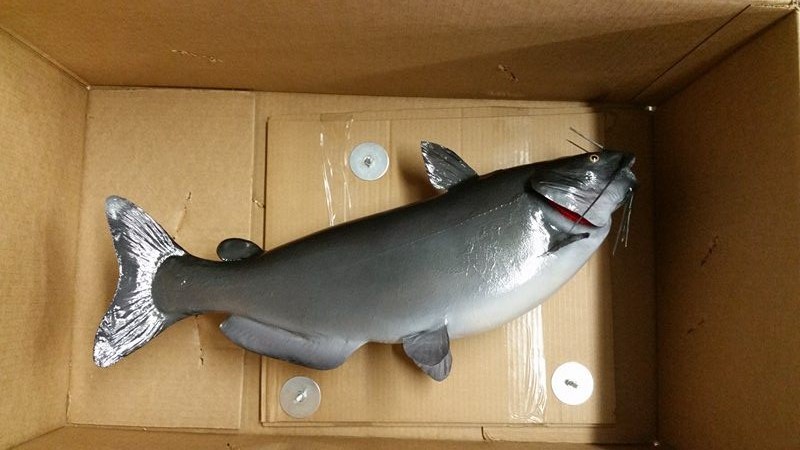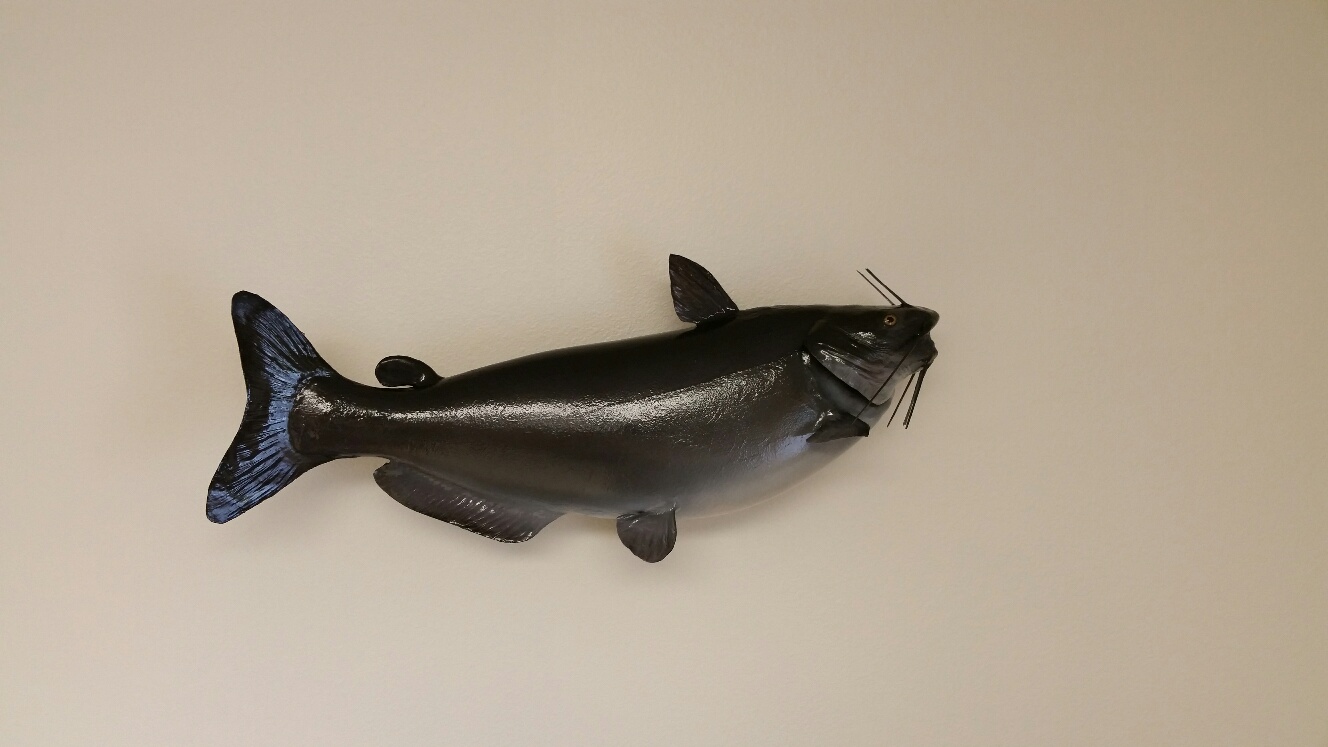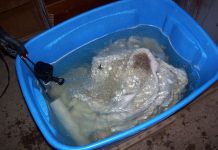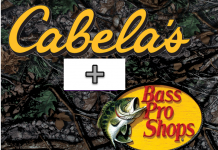It has often been said that catfish do not make good skin mounts, and that it is almost impossible to get a quality product doing them this way. I am never one to back down from the so called impossible. When my client asked for a skin mount for his prized catfish, I agreed to take it on.
I will say from the outset that using a replica blank or custom molding and casting is a better way to go on most catfish. From a time stand point and overall quality a replica is hard to beat. Catfish are also quite greasy fish, and this can effect the overall mount. There are ways to combat this however and produce a long lasting, quality catfish skin mount.
The subject of the article is a 28″ channel catfish from PA .
First step was to make a tracing or template of the fish so we could carve a form out of foam. You cannot buy catfish forms from the taxidermy suppliers.
After our tracing was made, we removed the head and set it aside for molding and casting. The catfish was skinned and fleshed like any other fish.We opted to use the natural fins.Molding and casting the fins is also an option . Doing this can help avoid shrinkage and grease bleeding…but this cat had fins that were not too greasy. The fleshed skin was soaked in a heavy solution of powdered borax and concentrated commercial Dawn® dish soap overnight.
On day two we molded and cast the head. The mold material we used was dental alginate. The head was cast out of a mix of bondo and polyester resin .
After our head was cast, we carved our form and made sure the head fit properly.
Next step was mounting. Use a smooth mache to help adhere the skin to the form, or better yet a clay mache mixed with dextrin. I like to mount my fish on a board for the first day. It really helps to get good junctures and work with the fins.
After the skin dried( about a week), we started the finishing process . We attached our cast head, did the fin repair work and apoxied the repair areas.The whiskers are the artificial ones from McKenzie supply. You can also use weed whacker line with the ends sanded . The fish is now ready for the paint booth .
Final step was painting. This fish was a darker color then most channel catfish we do.
Now the easy part–call the customer !

